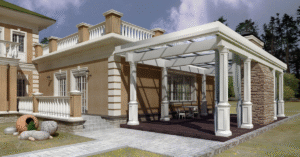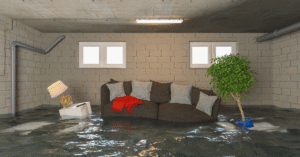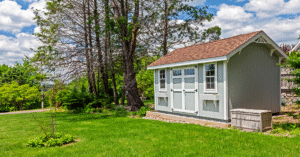Home insurance is an essential safeguard for homeowners, providing peace of mind in the face of unexpected events. Whether you’re protecting your house, its contents, or even your liability in case of an accident, understanding what your home insurance in Ontario actually covers is crucial to making informed decisions. In this article, we’ll break down the key components of home insurance coverage in Ontario and what you can expect from your policy.
1. Dwelling Coverage
The foundation of most home insurance policies is dwelling coverage. This part of your policy protects the physical structure of your home. If your home is damaged or destroyed by a covered event (like fire, vandalism, or a severe storm), dwelling coverage helps pay for the cost of repairs or rebuilding.
For example, if a fire damages your kitchen or a tree falls on your roof, dwelling coverage will help pay for the repairs. It’s important to note that dwelling coverage applies to the structure of your home, including the walls, roof, and foundation, but not necessarily to your personal belongings inside.
2. Personal Property Coverage
Along with protecting your home’s structure, personal property coverage is another key element of your home insurance policy. This coverage protects the belongings inside your home, such as furniture, clothing, electronics, and appliances.
If your personal items are stolen, damaged, or destroyed due to a covered event, personal property coverage can help you replace them. This includes scenarios such as burglary, fire, or even damage caused by weather (like a flooded basement).
One thing to keep in mind is that personal property coverage typically includes a coverage limit, so if you own particularly valuable items, like jewelry, fine art, or collectibles, you may need to increase your coverage for those items by adding endorsements or riders to your policy.
3. Liability Coverage
Liability coverage is a vital part of any home insurance in Ontario policy. It protects you if someone is injured on your property or if you cause damage to someone else’s property. If a guest slips and falls in your home or your dog bites a neighbor, liability coverage can help cover medical expenses, legal fees, and any settlement costs if you’re found liable for the injury or damage.
Liability coverage also extends to accidents that happen away from your home, such as if you accidentally damage someone else’s property while you’re out and about. The coverage provided can vary, so it’s important to talk with your broker about the limits you might need to protect your assets properly.
4. Additional Living Expenses (ALE) Coverage
If your home becomes uninhabitable due to a covered loss, such as damage from a fire or severe storm, additional living expenses (ALE) coverage kicks in. This coverage helps pay for costs you incur while living elsewhere temporarily, including things like:
- Hotel stays
- Restaurant meals
- Transportation costs
ALE coverage can be a lifesaver if you need to move out of your home while it’s being repaired or rebuilt after a disaster. However, this coverage typically has a time limit, so it’s important to understand how long it will last and how much assistance you’ll receive.
5. Water Damage Coverage
Water damage is one of the most common causes of insurance claims in Ontario, and it’s an important area to understand. While standard home insurance policies in Ontario often cover some types of water damage (like damage from burst pipes or accidental overflow), they don’t necessarily cover damage caused by flooding or sewer backup.
Flooding and sewer backup are generally excluded from basic policies. If you live in a flood-prone area or want to ensure you’re covered for these events, it’s essential to add flood insurance or sewer backup coverage as an endorsement to your policy.
6. Comprehensive or Named Perils: What’s the Difference?
Home insurance policies in Ontario generally fall into two categories: comprehensive and named perils.
- Comprehensive coverage is the most inclusive option. It covers damage to your home and personal property from a broad range of perils, except those specifically excluded in the policy (such as flooding or earthquakes).
- Named perils coverage only covers the risks specifically listed in your policy, such as fire, theft, or vandalism. If your home or personal property is damaged by a peril not on the list, you won’t be covered.
When selecting your home insurance policy, ask your broker whether the policy offers comprehensive coverage or named perils, and weigh which one best suits your needs.
7. Detached Structures Coverage
If you have other structures on your property, such as a detached garage, shed, or fence, these are typically covered under a detached structures section of your home insurance policy. Similar to dwelling coverage, this protects these structures in case they’re damaged or destroyed due to a covered event.
For example, if a tree falls on your detached garage during a storm, your detached structures coverage could help pay for repairs. However, the coverage limit may be separate from your home’s dwelling coverage, so you’ll want to confirm with your broker that it provides adequate protection for any outbuildings on your property.
8. Earthquake Coverage
While earthquake insurance isn’t typically included in basic home insurance policies, it’s an important coverage to consider for homeowners in areas where seismic activity is more common. If you’re in an earthquake-prone area of Ontario (such as parts of the Ottawa region), it’s wise to discuss adding earthquake coverage to your home insurance policy.
9. What’s Not Covered by Home Insurance in Ontario?
As comprehensive as home insurance in Ontario can be, there are certain exclusions to be aware of. These may include:
- Flood damage (unless additional coverage is added)
- Earthquake damage (unless added separately)
- Damage caused by wear and tear (such as aging roofs or appliances)
- Damage from pests, like termites or rodents
- Intentional damage caused by the homeowner
Make sure you thoroughly read the fine print of your policy to understand any exclusions that may apply.
10. How to Customize Your Home Insurance Coverage
Homeowners in Ontario have the option to customize their coverage by adding specific riders or endorsements. This could include:
- Home business coverage if you operate a business from your home.
- Personal valuables protection for items like jewelry or electronics.
- Green rebuild coverage, which helps cover the costs of environmentally friendly repairs or rebuilding after a disaster.
Customization allows you to tailor your policy to your unique needs, so be sure to discuss your lifestyle and potential risks with your broker.
Understanding what home insurance in Ontario covers is essential for making an informed decision that protects your home, personal belongings, and peace of mind. By working with an experienced broker, you can ensure that you have the right coverage for your needs, whether you’re concerned about water damage, liability, or additional living expenses after a loss. Don’t hesitate to ask your broker about adding extra coverage options to ensure you’re fully protected.
Remember, home insurance isn’t just about protecting your property; it’s about safeguarding your future. If you’re ready to review your current policy or get a quote for comprehensive home insurance in Ontario, reach out to us today for expert guidance and peace of mind.
Book a meeting Request a quote onlineYes
No
Somewhat






